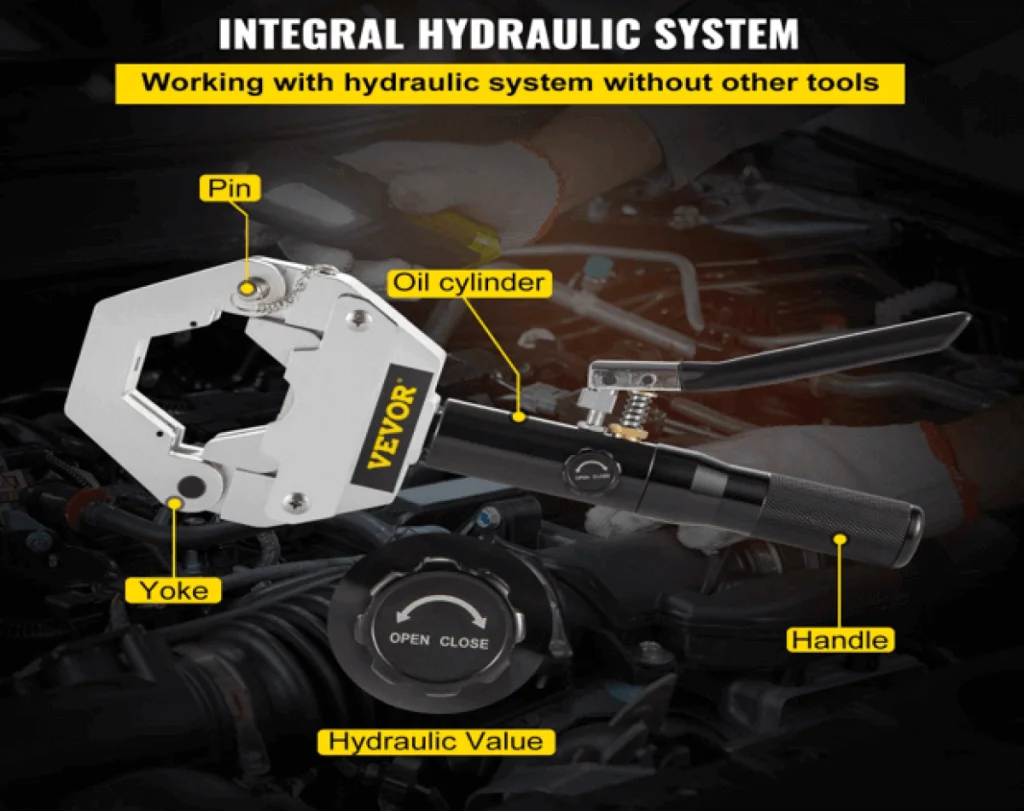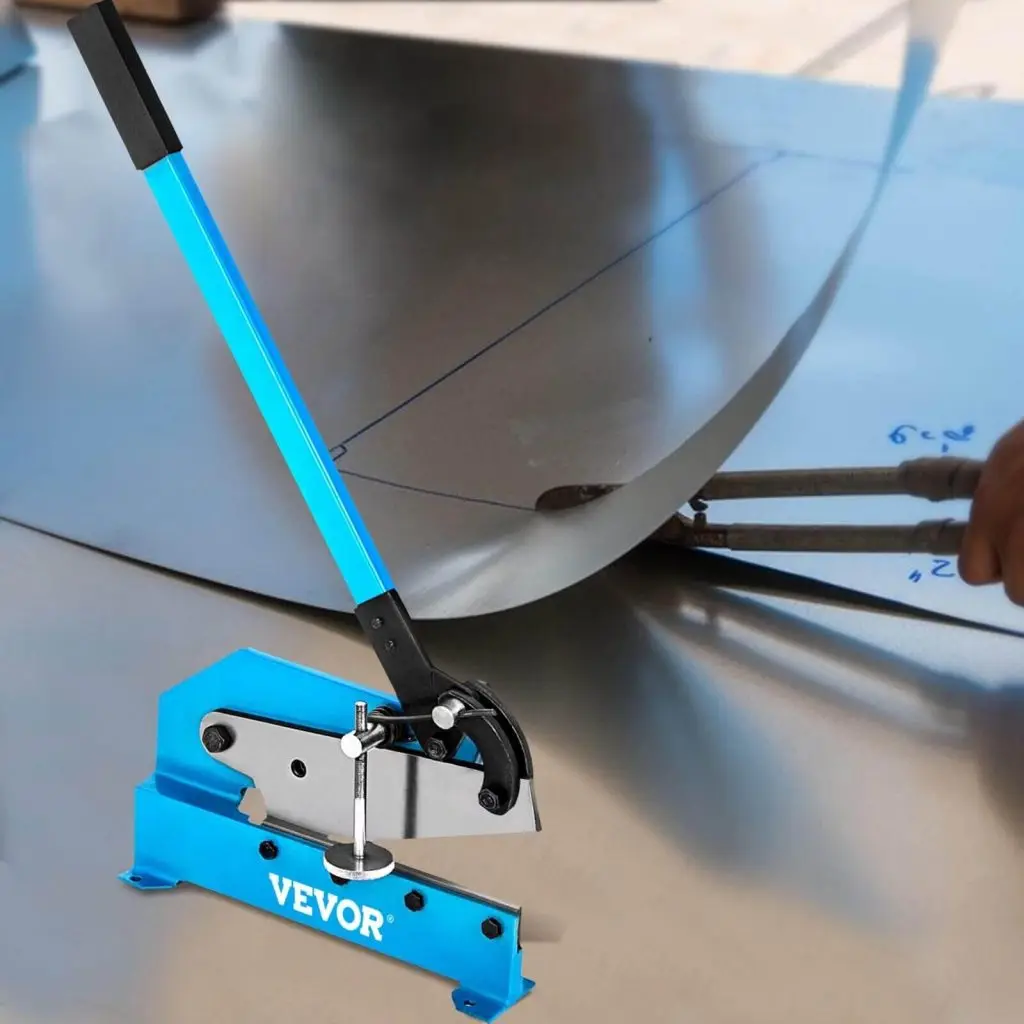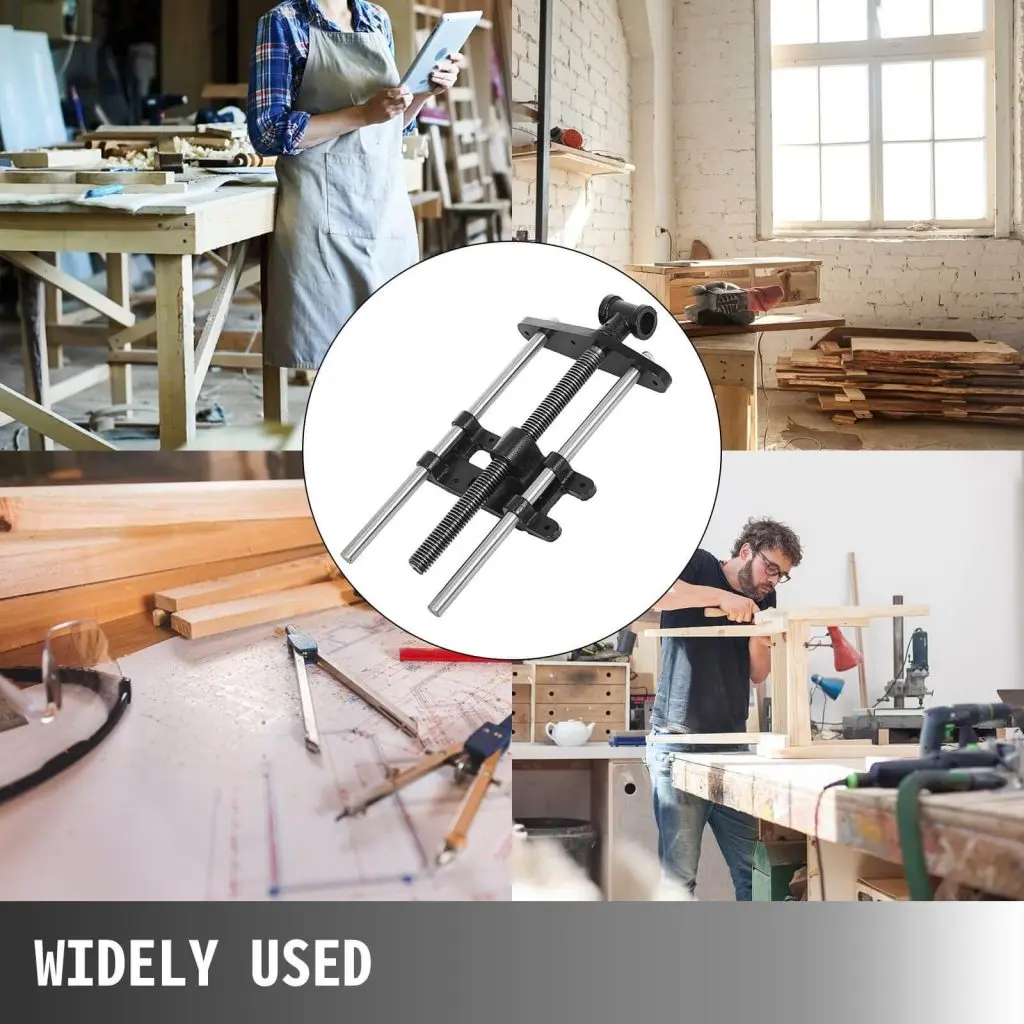Embarking on an exploration of ladders, these seemingly mundane pieces of equipment become our focus only when lofty heights are calling us. But there’s more to it than just grabbing any ladder. You’ll learn about different types of ladders and what they’re made from, which can make all the difference in your tasks.
We’ll also guide you through picking the right ladder for your needs because, let’s face it, safety and efficiency are key.
Safety tips? Got them, too. And those burning questions you’ve had about ladders but never asked? We’re answering them here. Get ready to climb safely and smartly after reading this piece.
Table of contents
Different Types of Ladders
When you think of ladders, it’s not just a simple climb. The variety is as vast as the reasons we reach for them in the first place. From changing a lightbulb to painting a masterpiece on your living room ceiling, there’s always one that fits the bill.
For this reason, we have compiled a list of different types of ladders, which include dock ladders, basement ladders, and those used to climb an attic. So, without further ado, let’s check out the different types of ladders and their uses.
Attic Ladder
As the name signifies, this ladder is used to reach places like attics. It is a retractable ladder that is installed in an attic’s entrance. Also called a loft ladder, it is an essential equipment in houses with an attic space.
VEVOR’s 12-step pull-down attics ladder is just what you need to reach the tight attic space in your house. Made from Aluminum-Magnesium alloys, it can bear a load of up to 660 lbs. This attic ladder has 12 steps, allowing you to reach up to 11.2 ft heights. Through its step-wise fitting guide, you can easily install this ladder on your own.
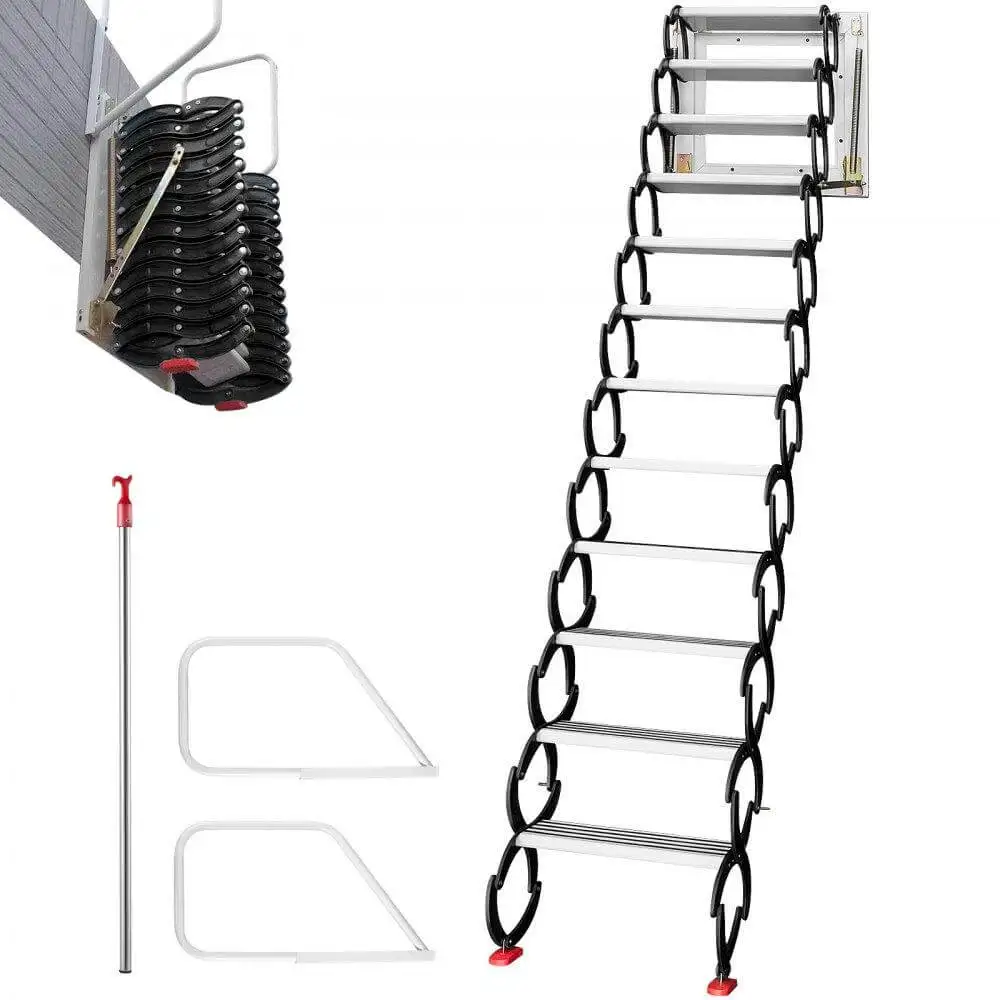
Telescoping Ladder
The next one on the list of ladder types that we would talk about is a telescoping ladder. As you can guess, this ladder has collapsible telescopic beams that you can extend or shorten according to your requirements. The collapsible beams make it ideal for small spaces as it becomes very compact. You can easily store it when not needed.
At VEVOR, you can find this telescopic ladder, which is 18.5 ft high and made from aluminum. This ladder comes with a one-button retraction and extension function and has a load-bearing capacity of up to 400 lbs.

Basement Ladder
Next up on our list of types of ladders is a basement ladder. Also called an Egress ladder, this type of ladder is primarily used to go down to a basement and exit from there in case of emergency. Most buildings require to have an egress window, which allows you to exit that building when caught up in an emergency.
VEVOR offers a basement ladder that is made from premium quality steel tubing. It can reach down to 45 inches deep well windows and has a load capacity of 300 lbs. To provide you with a strong grip in case of an emergency escape, this ladder comes with anti-slip strips.

Dock Ladder
Dock ladders can be best described as the ladders used to go in and out of a swimming pool. They are also called pool ladders. As they are in contact with water at all times, they are mostly made with stainless steel to avoid rust or corrosion.
VEVOR has a wide variety of dock ladders that have distinct features. You can find a dock ladder, which is made from aluminum. With its flip-up design, you can pull the ladder out of water when not in use, thus preventing rust and seawater corrosion.
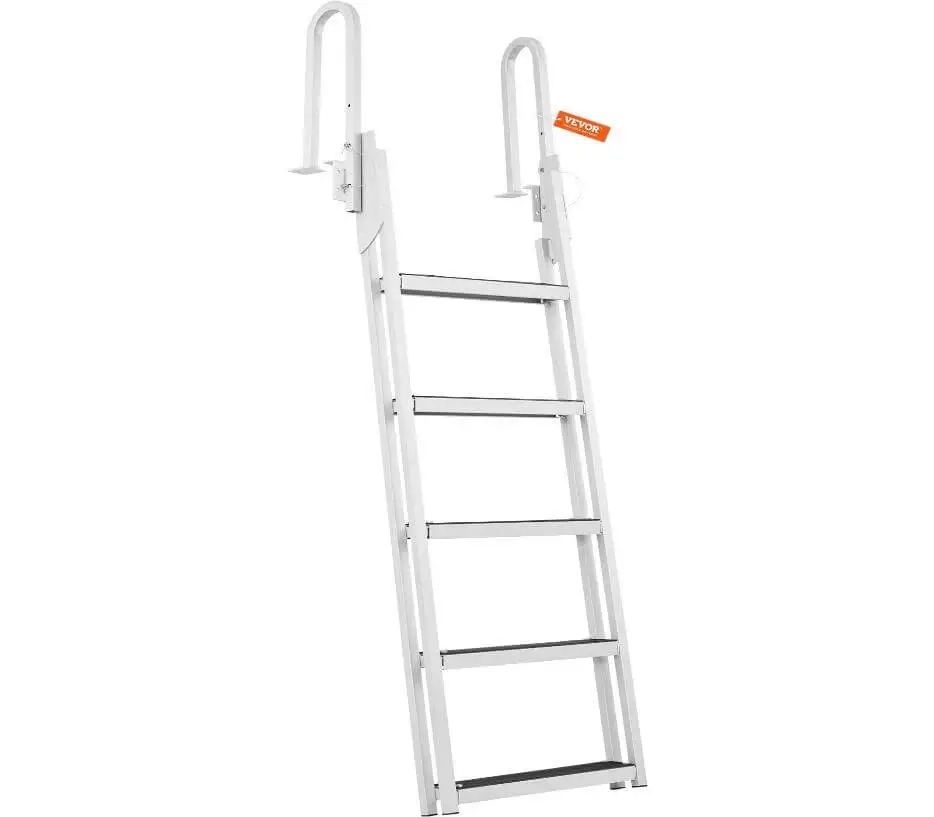
Step Ladder
Homeowners know how important having a step ladder is. Self-supporting, this ladder is a perfect fit for places such as homes or shops. Unlike standard ladders, step ladders can be used without propping them against anything. With a flat top and two sides with rungs, a step ladder can be propped up in an A shape, providing more stability and balance.
VEVOR offers a two-step stool that can also be used as a ladder. It is designed for everyday use, and its compact design allows you to fold and store it in a snap. But don’t let its small size compel you into thinking that it cannot bear the load. This step stool has a load-bearing capacity of around 330 lbs.
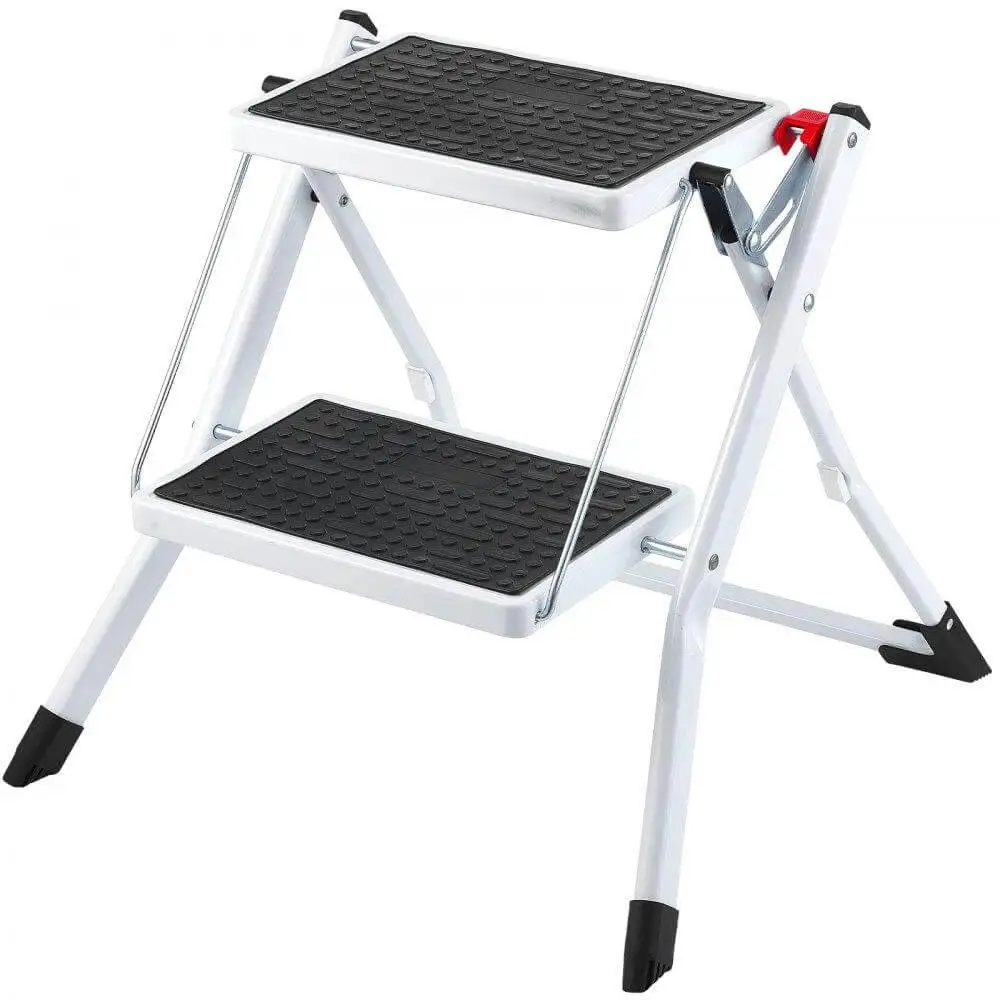
What Are Ladders Made of?
Ladders aren’t just tools; they’re your trusty sidekicks in the world of work and home repair. But ever wonder what gives them their superhero strength? Diving into the essence of what breathes life into these indispensable aids, let’s dissect their composition.
Aluminum: The Lightweight Champion
Aluminum ladders are like the athletes of the ladder world—light, strong, and ready for action. Their resistance to corrosion means they excel in outdoor tasks or anywhere moisture is a concern, ensuring longevity and reliability. Plus, moving an aluminum ladder around is a breeze because it’s so light.
However, remember that while aluminum is tough against weather and weight, it conducts electricity. So, think twice before using it near power lines or during electrical work.
Fiberglass: The Insulated Powerhouse
If safety around electricity sparks concern in your mind, fiberglass ladders are your go-to option. Unlike its metal counterparts, fiberglass doesn’t conduct electricity, making it safer for electrical projects.
Besides being non-conductive, fiberglass stands up well against wear and tear—it won’t dent or bend easily under pressure. Although pricier than some materials out there due to their robust features, investing in a fiberglass ladder means securing a reliable tool that’ll stick with you through thick and thin—or should we say high and low?
Steel: The Hercules of Ladder Materials
But let’s not forget about steel – the Hercules of ladder materials. Its heavy-duty nature suits those high-impact jobs where strength is key, but remember, it might add some extra weight to your task.
Choosing the Right Ladder
Picking out your climbing companion involves more than grabbing whatever looks sturdy enough at a glance. Understanding height requirements and weight capacity ensures you’re reaching new heights safely without any unexpected trips downward.
When it comes to choosing from different types of ladders, you don’t want one too big or too small; you need it just right for your job. But how do you decide? To navigate your selection, consider these elements that will lead you to the perfect pick.
Your Task at Hand
The first question to ask yourself is what you’re planning to use the ladder for. If you’re painting the interior of your home, an A-frame might be perfect. However, if exterior work is on the agenda, extending beyond a single story, an extension ladder could be your best bet. For those hard-to-reach places inside and outside alike, consider a multipurpose ladder that offers versatility with its adjustable size and shape.
Picking out ladders without considering their function can lead to unnecessary headaches or even dangerous situations. Make sure to match your task’s requirements with the ladder’s design and capabilities.
Ladder Material Matters
Ladders come in different materials: aluminum, fiberglass, and wood. Each has its own set of advantages depending on where and how they’ll be used. Aluminum ladders are lightweight, making them easy to move around, but not suitable near electricity due to conductivity risks—here’s where fiberglass steps up as a non-conductive material safe for electrical tasks but slightly heavier than aluminum options.
Thus, depending on the types of ladders and their uses, you can easily decide which one you need.
Why Choose VEVOR Ladders?
If you’re in the market for a ladder, chances are you want something sturdy, reliable, and versatile. That’s where VEVOR steps in – quite literally. With an array of options tailored to fit every need and scenario, picking a VEVOR ladder is like choosing a trusty sidekick for your adventures up high.
Durability Meets Design
VEVOR ladders aren’t just built; they’re engineered with precision. Made from high-grade materials such as aluminum and steel, these ladders can withstand heavy use without batting an eyelid. But it’s not all about toughness; their sleek design means they look good while getting the job done.
Functionality
Beyond aesthetics and durability lies functionality. Whether it’s telescoping ladders that extend to new heights or step ladders that provide stable footing, there’s something for everyone. Their folding designs also make storage a breeze – because who has space to spare nowadays?
Safety First
Let’s talk safety – because what good is reaching new heights if you’re taking risks? VEVOR, more than others, appreciates the essence of safety and thus outfits its ladders with elements such as anti-skid bases and broad rungs to guarantee your ascents are steadfast.
VEVOR’s commitment doesn’t stop at product design, either. In keeping with strict safety protocols, every ladder transforms into a steadfast ally, whether you’re swapping out light bulbs or diving into extensive remodeling projects.
FAQs About Ladders
What is the Most Common Type of Ladder?
The step ladder is the first choice in most homes and workplaces. Its freestanding structure allows for hassle-free use away from walls, ideal for chores situated at the heart of a room or amidst your garden’s greenery. Whether changing a light bulb or reaching for that top shelf, step ladders are your go-to.
Which Ladder is Safest?
If safety’s your top priority, fiberglass ladders win hands down. Unlike their metal counterparts, they won’t conduct electricity, which is a big plus if you’re working near wires or power lines. They’re sturdy, too, giving you that rock-solid feel underfoot so you can focus on the task at hand without worrying about wobbles.
Do Ladders have an Expiration Date?
You might find this surprising, but yes, ladders do age out. Although there’s no strict “use by” date stamped on them, general wisdom suggests replacing them every 5-10 years, depending on usage and storage conditions. Regular checks for wear and tear will also help ensure your climbs are always safe.
Conclusion
You now know there are many types of ladders, each suited for different tasks. Remember, material matters; whether aluminum or fiberglass, choose what best fits your needs.
Picking the right one is crucial. Safety and efficiency go hand in hand when it comes to reaching new heights. As for those questions? Now you have answers.
Let this be your stepping stone to smarter choices and safer climbs. Start smart, stay safe, and select wisely—your guide through the world of ladders has set you up for success.



